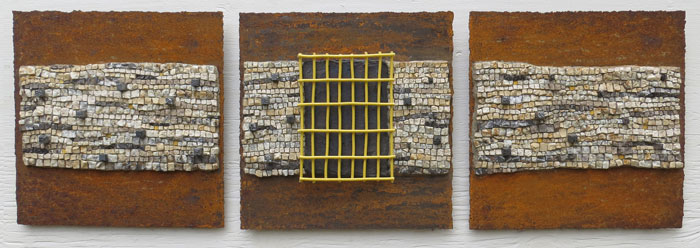 Tryptich, each panel 12 x 12 inches. Rusted steel panels, granite, marble, smalti, lead type slugs, coated wire, tinted thinset.
Tryptich, each panel 12 x 12 inches. Rusted steel panels, granite, marble, smalti, lead type slugs, coated wire, tinted thinset.
artist's statement: I have long been a typography geek. Ever since I began to work in the mosaic medium, I’ve wanted to incorporate typography into my work. Toward this end, I began collecting 1950s era lead type, including forty Chinese type slugs, twenty of which I used in this artwork. However, since misappropriated “foreign” languages on t-shirts, hats, and tattoos has become a global phenomenon, I didn’t want to incorporate logograms with meanings unknown to me. So I stamped each type slug onto paper (see below), and obtained a translation from a friend. The process revealed characters with meanings that could be considered evil, unpleasant, or criminal, so I eliminated them from inclusion in the artwork. This first stage of selection did not sufficiently reduce my pool of candidates, so for the second round of selection, I chose characters whose shape and form were pleasing to me. I realized in hindsight that my background check and selection criteria were discriminatory and subjective. Nevertheless, I couldn’t incorporate all the type slugs, so I put the twenty rejects back into the box. Their fate is uncertain.
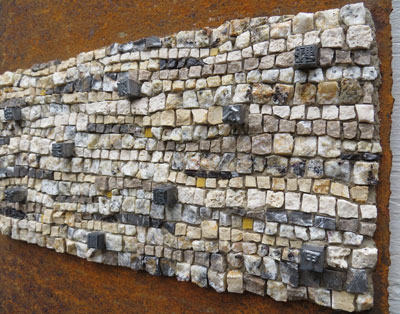
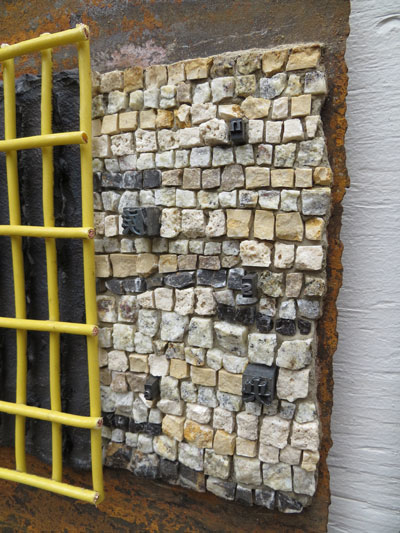
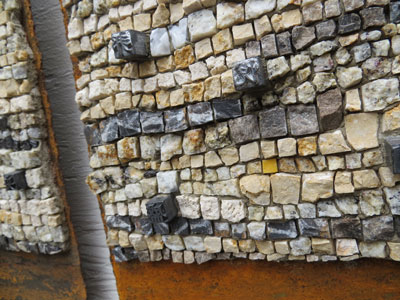
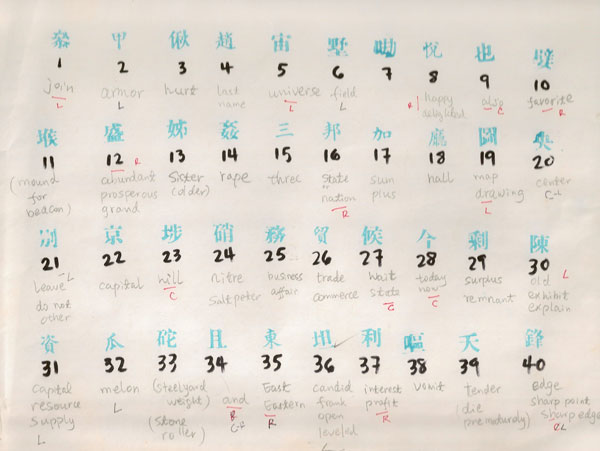
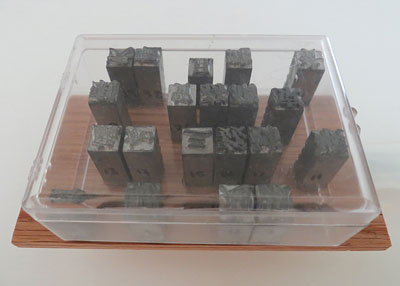

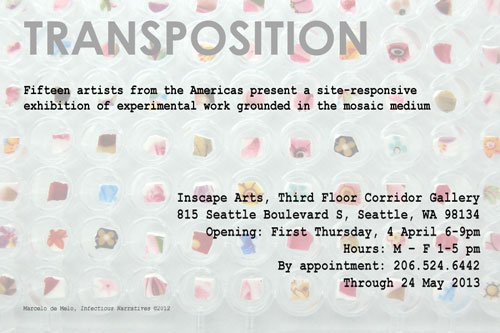 Curated by Seattle artists
Jo Braun,
Kate Jessup and Kelley Knickerbocker.
Curated by Seattle artists
Jo Braun,
Kate Jessup and Kelley Knickerbocker.